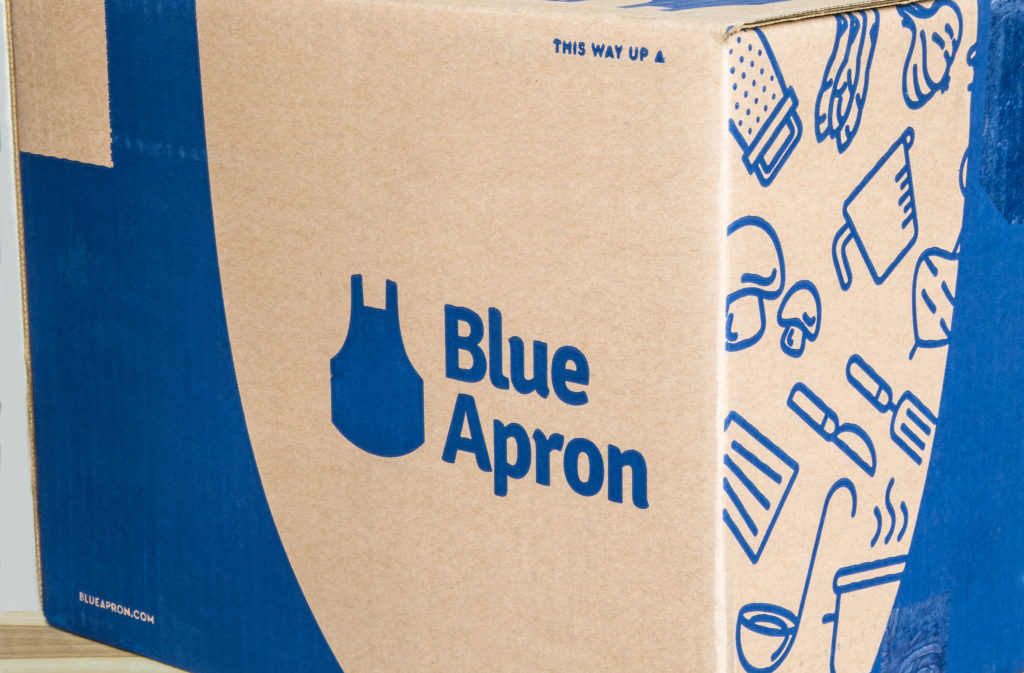Prior to 2020, an increasing amount of companies pivoted to or added a subscription model to their business strategy. This shift accelerated exponentially as the economic impacts of the pandemic forced business owners to quickly adapt. By the end of Q3 2020, nearly 100,000 of Yelp-listed small businesses had permanently closed their doors. With state shutdowns, rapidly changing consumer behaviors, and new priorities arising throughout the world, companies needed to act swiftly in order to survive.

Americans shopped online more than ever, bringing in an average revenue of $1,804 per customer. The fact that 91% of the country is projected to be an online shopper by 2023 is urging businesses to establish themselves in the digital space. Close to 60% of businesses started adopting an online delivery channel, while overall e-commerce sales reached $4.2 trillion last year.
Being online does not automatically equate to success, however. Consumers increasingly expect brands to build a strong and trustworthy relationship with them, adapting and anticipating their needs. With a strong shift in consumer behavior and limited ways to operate due to lockdowns, businesses turned to an impactful model that could keep them afloat: Subscription.
The Pandemic’s Impact on Ad Revenue
Ad revenue — money generated from in-app advertising — saw a steep decline in 2020. Media companies suffered a dramatic few quarters and scrambled to make up for the lost profits. For example, Google’s ad revenue dropped for the first time ever by 5.3%, according to eMarketer.
Twitter’s Q2 earnings in 2020 showed a 23% decrease in U.S. ad revenue. Advertisers suspended their campaigns due to the strains of the pandemic and the civil unrest within the country. The social media giant looked for new ways to generate revenue, with subscription on its shortlist. “We want to make sure any new line of revenue is complementary to our advertising business,” CEO Jack Dorsey told CNN.
News outlets also experienced a hit in ad revenue. Global newspaper advertising — print and online — suffered a multibillion-dollar loss, dropping 16.3% by the end of 2020.

The New York Times saw its total ad revenue fall by 15% in Q2, but the company did gain more digital subscribers than ever before in the first three months of 2020. Regardless of the multimillion-dollar loss, Chief Executive Mark Thompson remained optimistic in the company’s subscription business model.
“We believe that the company will emerge from this global crisis with a distinctive and valuable advertising revenue stream to complement a digital news subscription business,” Thompson said.
Companies scrambled to identify if they would be able to continue investing in advertising or if they had to pivot. This forced major brands like the New York Times to become more self-sufficient by continuing to build their community with trustworthy content. The publisher added over 2 million subscribers in 2020, bringing its total count to almost 8 million.
These shifts in how consumers engage with ads and how businesses invest illustrate two major trends that flourished during the pandemic:
- Building trusted communities
- Meeting consumers where they are
Customers no longer want to be bothered by irrelevant ads or products. They seek to create long-lasting relationships with brands they can trust, something the subscription industry is built for.
The Evolution of Subscriptions and Its Acceleration Amid the Pandemic
Subscriptions have been steadily increasing for years. Recent numbers show revenue growth of more than 400% since 2012. The pandemic’s impact accelerated that surge over the last year with a growth rate of 11.6%. In Q4 2020 alone, subscription companies reported a growth rate of 20%.
The subscription space acted as a life jacket for traditional businesses that were drowning under the pandemic’s impact. Pivoting to subscription helped them stay afloat while also generating extra revenue.
Consumer behavior drastically changed, with the focus shifting toward convenience and safety. There was no need to go to the mall, the grocery store, the beauty salon or the ice cream shop when you could have all of them come to you with a simple click. Subscription companies began fulfilling consumers’ needs during the pandemic’s early days. From February to July 2020, 96 million Americans became paying subscribers, bringing the total number of subscribers to 535 million.
Seven weeks after the announcement of the pandemic, there was an 85% growth rate in new paying subscribers. Although numbers aren’t back to pre-coronavirus levels, the growth rate witnessed a gradual rise in new, paid subscriptions in 2020. Almost all subscription industries have thrived in that timeframe.
Adopting Subscription Within Your Business
Various industries are evolving to improve convenience and meet new customer expectations. The subscription model can increase business predictability and solidify a company’s engagement with the community. Establishing a recurring revenue is the next logical step for any business looking to thrive in the years to come.
Small Businesses
The impacts of the pandemic, unfortunately, hit small businesses the hardest. Smaller companies within so many industries were forced to close or shift. Two examples of this quick action are Chaeban Ice cream and Kids Baking Club.
Last year’s record number of subscription revenue encouraged even ice cream shops to hop on the trend. Chaeban Ice Cream, for example, struggled greatly when the pandemic hit, having to lay off almost its entire staff. The Canadian company was left wondering if it would ever get out of the deep waters. With bankruptcy looming over their heads, the partners at Chaeban created a new and unique experience for their customers — a monthly ice cream subscription. The company is now “stronger than ever” after pivoting effectively, with expansion plans in the works.

Similarly, child care services were affected. SUBTA member Jill Lodato, for example, owned a preschool for 20+ years before it was shut down due to Covid. Forced to pivot, Lodato combined her love for education and baking into a monthly subscription box. In early May 2020, she launched Kids Baking Club, a baking kit for kids that includes recipes, resources, and tools to create yummy treats. By December 2020, Lodato reported over 500 subscribers and her community continues to grow monthly. Her box was a way for her to fuel her love for the community while also providing families much-needed activities amidst the pandemic’s closure of her preschool.
Social Media
Twitter recently announced a subscription-based feature called “Super Follows.” Influencers and celebrities who have gone viral on social media can directly monetize their content without any ad partnerships, the usual source of income. The feature would start at $4.99 a month with perks ranging from a newsletter subscription to the usage of additional features on the social media platform.
Twitter users did not receive the news as well as expected.
“#RIPTwitter” was trending soon after the announcement of the “Super Follows” feature. Twitter’s model has been free for so long (15 years) that some users are not willing to pay a fee to follow their favorite accounts. Secondly, almost all famous or verified accounts belong to celebrities or popular political figures who are already a part of the “elite” society. Asking regular folk to pay the rich for their content has made users question the brand’s loyalty, priorities and understanding of its user base.This example illustrates a subscription’s need to continuously listen to customer feedback while providing a trustworthy, community-building experience.
Hospitality
The hospitality industry suffered a $492 billion loss during the pandemic when travel mandates were in effect. With restrictions slowly lifting and remote work still encouraged, hotels have identified a new opportunity for people to do their jobs from their lodging facilities.

Multilocation hotels are using subscriptions for unlimited stays amidst the work-from-home orders. Workers who need a change of scenery can subscribe on a monthly basis to a handful of hotels. For example, the brand Freehand Hotels is offering a monthly membership program of about $2,500 at locations in New York, Los Angeles, Miami, and Chicago. Subscribers can stay at any of the hotels for as long as they want with food and beverage discounts.
This trend goes beyond the United States. In Amsterdam, Netherland, Zoku went all-in on its subscription business model to accommodate remote workers and business travelers. The hotel is expanding to several new locations — Copenhagen, Denmark, and Vienna, Austria. “The vision is that remote workers will spend time with us in different cities every year,” said Veerle Donders, Brand and Concept Director at Zoku.
Healthcare
Consumer behaviors shifted during the pandemic as fears of contracting Covid-19 grew stronger and social distancing mandates were put in place. To make matters worse, medical businesses struggled with accessibility to medical supplies for proper care of their patients. Establishing a subscription model enabled healthcare companies to create unique medical experiences for patients without involving risky trips to the doctor’s office or the pharmacy. These shifts propelled healthcare brands to identify and launch new offerings to better meet consumer needs.

Reperio Health, a Portland-based health tech company, raised $6 million in funding for at-home medical test kits. Some tests are used for measuring cholesterol, triglycerides, and glucose. This new model helps Reperio provide the best care for its patients regardless of their location.
Similarly, Thirty Madison, a human-first health company offering specialized treatment and care for people with chronic conditions, launched a new subscription brand called Picnic to treat allergies. The subscription offers customer-curated allergy medication and a care team to answer questions and offer support. With major acceleration from the pandemic, these pivots will continue to shape the typical habits in healthcare.
Meal Kits
When most in-person dining shut down, an opportunity arose for people to make the most of their time at home and try cooking more, which 54% of them did, sometimes with the help of meal-kit subscription box companies.
HelloFresh’s revenue skyrocketed to a 122% increase last year. Something that would’ve taken the company three years to achieve happened in three months, said Dominik S. Richter, CEO, in an earnings call with Business Insider. Furthermore, the meal-kit subscription company has over 5 million subscribers to date — a 78% increase from 2019.

Meanwhile, Blue Apron’s revenue increased 22% in Q4. Meal-kit subscription boxes have now become a multibillion dollar segment of subscriptions because of this shift in consumer behavior. The challenge meal-kit businesses continue to face now is focusing on providing value as dining reopens and ensuring customer retention is a success as the world begins to reopen.
Final Thoughts
Traditional businesses can benefit greatly from pivoting to subscription or adding the model to their existing strategy with or without the pandemic. Whether it’s a box, a membership, a subscribe and save, SaaS (Service as a Software) or a new streaming service, the doors are wide open for anyone who wants in.
The businesses mentioned above were not alone in the impacts that reverberated around the world. The shifts from the pandemic were felt throughout all businesses.
The pandemic undoubtedly sped up the timeline at which the subscription space was expected to grow, and consumer behavior and demands are constantly evolving as of late. Establishing a recurring revenue and a lasting relationship with your consumers is more important than ever, and a subscription allows you to do both successfully.
Key Takeaways:
- The subscription trend has been on the rise for years, with new numbers showing an increase of over 400% in revenue growth.
- Social media, hospitality and healthcare industries have all benefited from having subscription models amidst the pandemic.
- Seven weeks after the announcement of a pandemic, there was an 85% growth rate in new subscriptions.


